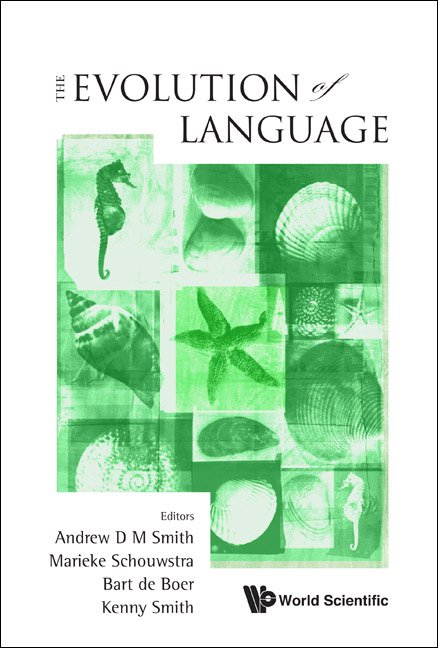RECREATING DUALITY OF PATTERNING IN THE LABORATORY: A NEW EXPERIMENTAL PARADIGM FOR STUDYING EMERGENCE OF SUBLEXICAL STRUCTURE
Duality of patterning (DoP) refers to the reuse and recombination of a small set of meaningless units to create a near-limitless set of meaningful morphemes. We develop an experimental paradigm to explore the development of DoP. In this paradigm, human participants (each representing one generation) Icam a lexicon of random visual symbols, such that influence from their own language is minimized. Using a communication system similar to that of Galantucci (2005), participants use a digital stylus to draw symbols on a computer display but, critically, the mapping from the stylus to the screen is restricted in order to prevent the use of orthographic characters or pictographs. Participants recreate the set of symbols, and these are transmitted to the next participant in a diffusion chain through a process of iterated learning. This paradigm allows us to observe evolution of a cultural behavior such that no single participant is the driver of innovation and selection; instead the behavior is cumulatively developed across individuals.
A sample of the results is presented in Figure 1 (multiple diffusion chains were created, each consisting of 5 or more generations). Here we note few items remain unaltered by the fifth generation. Most symbols undergo small changes that accumulate over time (i.e. item #7). Lost symbols are generally replaced with novel symbols composed of segments present in other items in the lexicon. As items are modified and replaced in this way, a small set of subunits begins to pervade the entire lexicon. After several generations, items become more similar and these similarities lead to, and result from, the reuse and recombination of smaller units.
In subsequent experiments, we study how the pairing of meaning with each symbol influences the development of subunits based on semantic categories (such as abstract shapes and animate creatures) similarly to studies by Thiesen et al (to appear). Results of this paradigm suggest that an interaction of two or more factors may be partly responsible for the emergence of DoP: articulation and memory constraints. As each generation alters the symbols responding to tension between the production and perception systems, symbols become more similar and more difficult to recall. To overcome this, each "generation" modifies the set via small, often unintended, innovations in order to form distinctions within the set. In Figure 1 above, we see that by Gen 5 several symbol pairs differ only in a single feature. For example: Items #2 and #3 are mirror images of one another along the y-dimension. Items #9 and #3 differ by the direction line segments beneath the symbol.
Recently, Sandler et al. (to appear) argue that DoP is still emerging in a spontaneously created new sign language, Al-Sayyid Bedouin Sign Language (ABSL), whereas established older sign languages have contrastive phonological systems. This may be because sign languages have large articulatory spaces and can exploit iconicity, or a transparent form-meaning mapping. This paradigm may allow us to test articulatory constraints (by modifying the pad ana stylus' ability to recreate symbols) and memory constraints (by varying the number of symbols in a set) in order to evaluate effects on subjects' output forms across generations.
Note from Publisher: This article contains the abstract and references.



